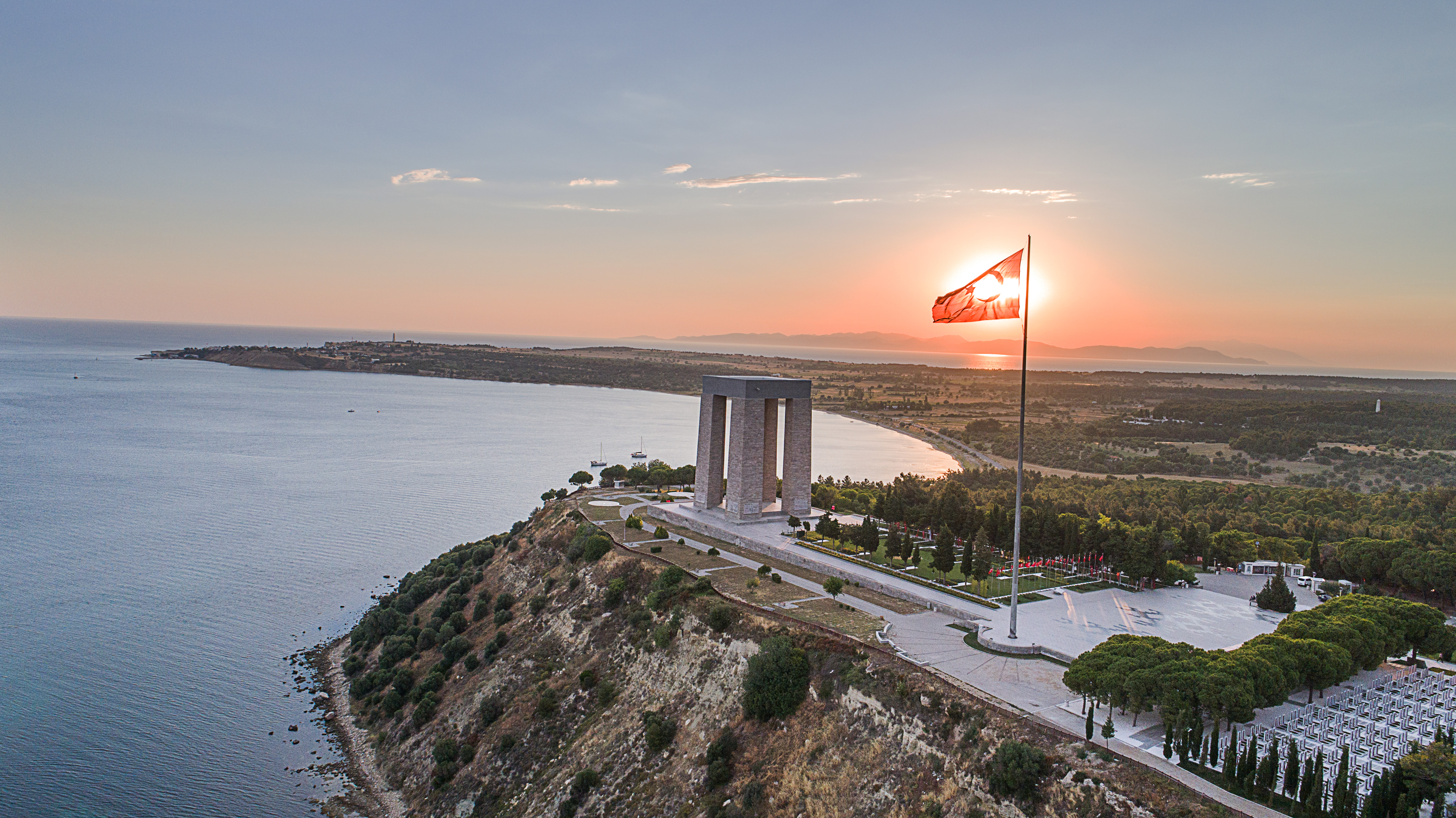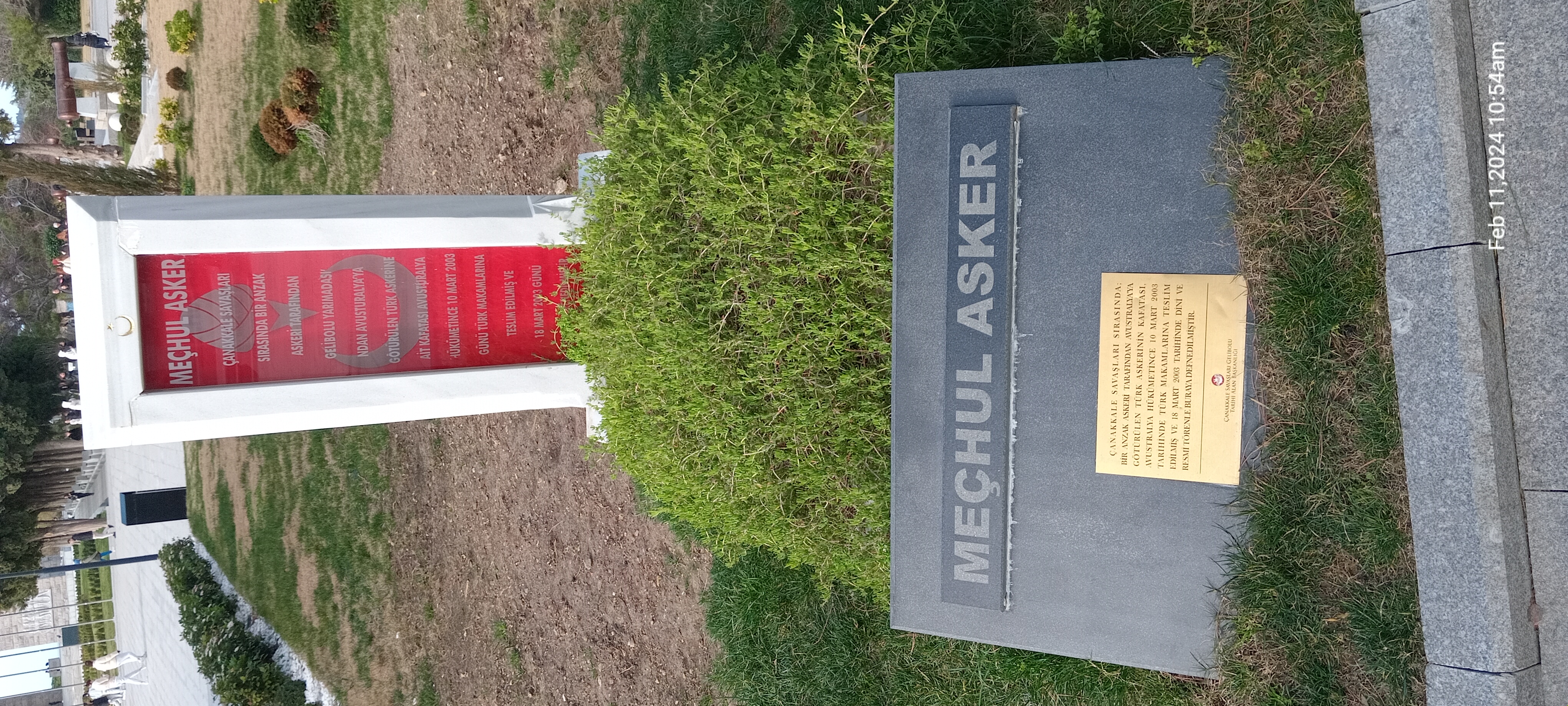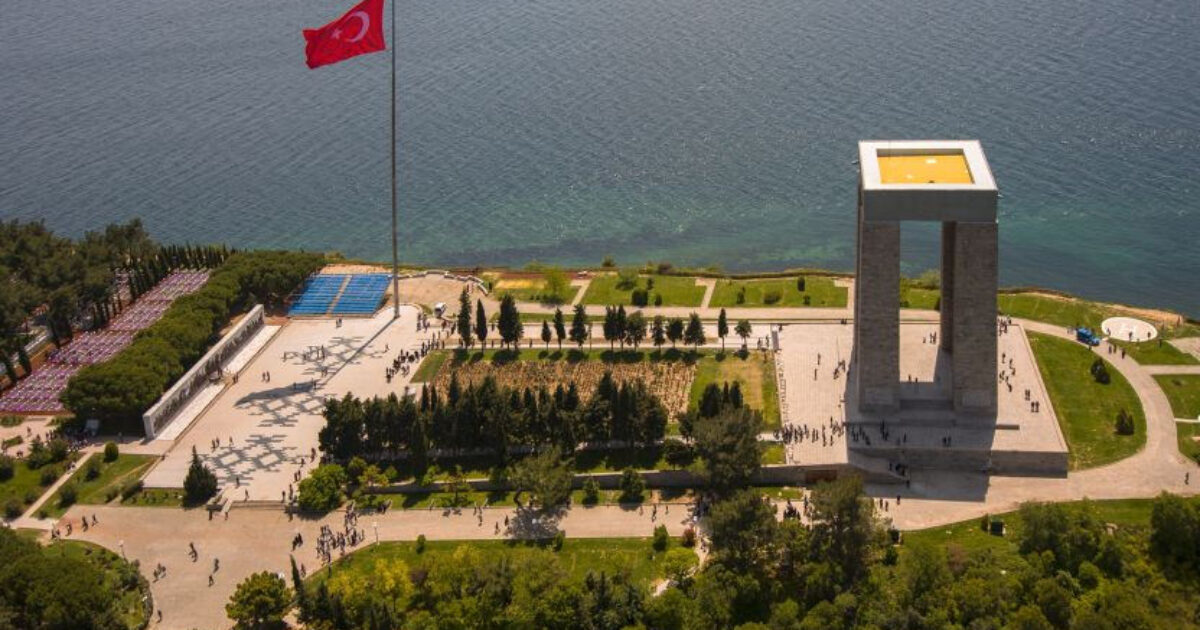Have you ever been to the very tip of the Gallipoli Peninsula, to that point where the whispers of wind and history meet? There, a silent giant stands on four massive legs reaching for the sky, telling the story of how a nation's destiny was written: the Çanakkale Martyrs' Memorial. Greeting you from Hisarlık Hill, which overlooks Morto Bay and the Dardanelles Strait, this monument is not just a structure; it is a soul. But is visiting this monument just about paying respects? Absolutely not! In this article, we will guide you through the three most poignant steps on the list of things to do at the Çanakkale Martyrs' Memorial. These steps will transform you from a mere visitor into a living witness of that great epic.
Pay your respects beneath this magnificent monument at the tip of the Gallipoli Peninsula
As you approach the Memorial, the first thing that strikes you is its colossal size. This structure, standing 41.7 meters tall, rises to the sky on four legs, each 7.5 meters wide. These numbers might not mean much, but the feeling you get when you stand beneath it is crystal clear: you feel tiny. The 3,800 tons of granite, 285 tons of iron, and thousands of tons of cement used in its construction symbolize not just a monument, but the weight of a nation's sacrifice.

The money for this monument didn't come from the state; it was collected directly from the people. It rose as the nation's own creation, built with stories like students saving their pocket money in piggy banks and a taxi driver donating his entire day's earnings. That's why every stone carries the spirit not only of the martyrs but also of the millions who are grateful to them. As architect Doğan Erginbaş said, those four legs represent the collective ascent to the heavens of our martyrs who came from all four corners of the homeland to give their lives here.
When you look up at the ceiling of the monument, a giant Turkish flag made of mosaics greets you. In that moment, you feel to your core how the monument embraces you and how we become one under the shadow of that flag. Look closely at the reliefs on the legs; the faces looking towards the sea depict the naval battles, while those facing the land tell of the bloody struggle in the trenches. The architecture of the monument proclaims not the arrogance of victory, but the sublimity of sacrifice and spirituality.
Tour the symbolic cemetery and visit the tomb of the Unknown Soldier
After completing your moment of respect before the grandeur of the monument, walk towards the vast area just behind it. This is the Symbolic Cemetery, opened to visitors in 2007. Before you lie symbolic glass headstones bearing the names of 59,408 martyrs whose identities have been confirmed. This is not a graveyard, but a sea of names.

As you wander among these tens of thousands of names, you'll notice that the headstones are arranged according to the hometowns of our martyrs. When you find the name of a hero from your own city, perhaps even your own neighborhood, you understand how the war that happened a century ago is truly our story. Among these thousands of symbolic graves, there is only one real grave, and its story will give you goosebumps.
This grave belongs to the Unknown Soldier. According to the story, during the war, an Anzac soldier took the skull of a fallen Turkish soldier and brought it to Australia. Exactly 88 years later, in 2003, this skull was returned to Turkey and was buried here with military honors on March 18th. At that moment, the abstract number of 59,408 comes to life in the concrete story of a single soldier. That unknown soldier, in fact, represents them all. On the marble plaque right beside it, the unforgettable words of Mustafa Kemal Atatürk are inscribed: Those mothers who sent their sons from faraway countries, wipe away your tears. Your sons are now lying in our bosom.... These words are the greatest proof that on this land, respect is shown not only to our own heroes but also to the shared pain of war.
Learn the details of the war by visiting the museum beneath the monument
After the spiritual atmosphere of the monument and the silence of the cemetery, it's time to descend into the heart of the monument—its base. The War Relics Museum, opened in 1971, takes you from the ethereal air of the monument down to the brutal reality of the war. The war maps and black-and-white photographs from the period at the entrance instantly transport you back a hundred years.

Time stands still when the items in the display cases begin to speak. On one side, there are canteen cups, medicines, and liquor bottles belonging to British soldiers; on the other, the belongings of our Mehmetçiks (Turkish soldiers). Blood-stained watches recovered from our martyrs, their last letters to their families, bullet-pierced Qur'ans... These are not just objects; they are the silent witnesses of lives cut short.
Perhaps the most shocking part of the museum are the displays that show the brutality of the war in its rawest form. Bullets and shrapnel fragments found embedded in human bones are where words fail. And of course, the famous bullets that collided and fused together in mid-air... In that moment, you understand what it meant to be in a hell where 6,000 bullets fell per square meter. While the top of the monument tells you how sublime sacrifice is, this museum underneath confronts you with the immense price paid for that sacrifice.
If you want to take a cultural tour in Çanakkale, you can check out our tours on our Çanakkale Tours page.
While You're Here...
After filling your soul with history at the Martyrs' Monument, the Gallipoli Peninsula has even more stories to offer. Climb the imposing walls of Kilitbahir Castle, a keystone of the Bosphorus and a legacy of Mehmed the Conqueror, and take in the view from there. Then, witness the unwavering will of the heroes to whom Mustafa Kemal declared, I am not ordering you to attack, I am ordering you to die! If you have time, be sure to add the monument to Corporal Seyit, who single-handedly carried a 276-pound shell, and the Namazgah Bastion, the backbone of the Bosphorus defense, to your itinerary.
Bibliography: For the most current and official information regarding your visit to these sacred lands, route plans, and events, we recommend visiting the official website of the Çanakkale Wars Gallipoli Historic Site Directorate (https://canakkaletarihialan.gov.tr/).
Frequently Asked Questions
Is there an entrance fee for the Çanakkale Martyrs' Memorial, and what are the visiting hours? No, as the Çanakkale Martyrs' Memorial and the symbolic cemetery are open-air monuments, there is no entrance fee or restriction on visiting hours. You can visit any day, at any time. However, the War Relics Museum located beneath the monument and other private museums and batteries in the area (such as Kilitbahir Castle, Namazgah Battery, etc.) may have different entrance fees and visiting hours for summer/winter periods. It is best to check the Historic Site Directorate's website for up-to-date information before your visit.
Is it possible to reach the Çanakkale Martyrs' Memorial without a private car? Yes, it is possible. You can take the ferry from the center of Çanakkale to Eceabat, and from Eceabat, you can reach the Memorial by minibus or taxi. However, since the memorials and monuments on the Gallipoli Peninsula are spread over a large area, renting a private car or joining a professionally guided tour is recommended for the most efficient visit.
How long does it take to visit the monument, the cemetery, and the museum? The duration of the visit depends on your personal interest. However, to truly feel the monument, walk through the symbolic cemetery reading the names, and explore the museum in detail, we recommend setting aside at least 1.5 to 2 hours. If you enjoy taking photographs and absorbing every detail, this time may be longer.


 English
English Türkçe
Türkçe